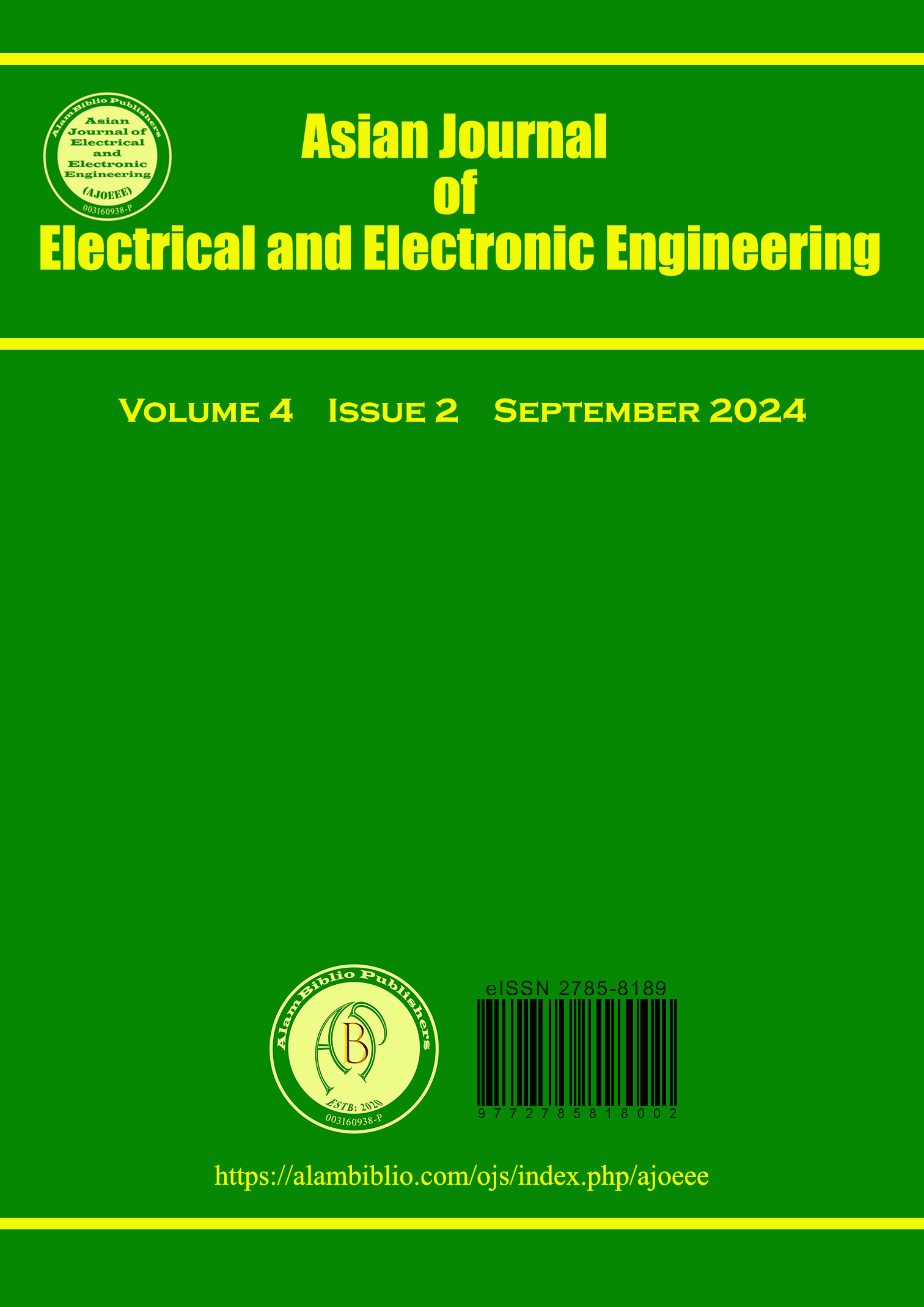Blockchain Based Email Security to Mitigate Phishing Attack
DOI:
https://doi.org/10.69955/ajoeee.2024.v4i2.73Keywords:
Blockchain, Smart Contract, Email Security, Phishing Attack, Authentication, Decentralized SystemAbstract
Due to the rapid development of research in blockchain technology and cryptocurrencies, all sectors of an economy rely on their security essentials to mitigate various patterns of attack on the Internet. The smart contract is a transaction protocol that strengthens, verifies, and automatically enforces agreements after negotiation between multiple untrustworthy blockchain parties. Despite the positive aspects of smart contracts, issues of security risks, weaknesses, and legal challenges continue to undermine their implementation. This paper proposes an enhanced email verification system using blockchain-enabled smart contracts. In this framework, blockchain email enables swift verification of all emails being transmitted by introducing a challenging framework that prevents an internet attacker or cybercriminal from altering the authentication process. An acknowledgement email will be transmitted to the sender upon successful delivery, and the receiver can automatically receive the email with unique credentials. The findings reveal that the proposed system significantly mitigates phishing attacks by ensuring email authenticity and transaction integrity through blockchain hashing techniques, thereby enhancing email security in both online and offline environments.
Metrics
Downloads
References
[1] H. S. Al-Julandani and K. Al-Harthy, "Integrate Blockchain with Cloud Based Architecture to Prevent Phishing Attack," in 2022 10th International Conference on Reliability, Infocom Technologies and Optimization (Trends and Future Directions) (ICRITO), Noida, India, 2022, pp. 1-6. https://doi.org/10.1109/ICRITO56286.2022.9964982 DOI: https://doi.org/10.1109/ICRITO56286.2022.9964982
[2] B. Samuel and V. T. Somasundaran, "Prevention of Man-in-the-Middle Attacks using Blockchain VPN," unpublished.
[3] A. Alabdulatif, I. Khalil, and M. S. Rahman, "Security of Blockchain and AI-Empowered Smart Healthcare: Application-Based Analysis," Applied Sciences, vol. 12, no. 21, p. 11039, 2022. https://doi.org/10.3390/app122111039 DOI: https://doi.org/10.3390/app122111039
[4] A. Chakraborty, A. Biswas, and A. K. Khan, "Artificial Intelligence for Cybersecurity: Threats, Attacks and Mitigation," arXiv preprint arXiv:2209.13454, 2022. https://doi.org/10.1007/978-3-031-12419-8_1 DOI: https://doi.org/10.1007/978-3-031-12419-8_1
[5] A. Pillai, A. V. Ramachandran, and V. Saraswat, "Design Considerations for Protection of Blockchain based Digital Identity Ecosystem," Journal of Information Assurance & Security, vol. 17, no. 3, pp. 171-180, 2022.
[6] G. R. Permana, T. E. Trowbridge, and B. Sherborne, "Ransomware Mitigation: An Analytical Investigation into the Effects and Trends of Ransomware Attacks on Global Business," unpublished, 2022. https://doi.org/10.31234/osf.io/ayc2d DOI: https://doi.org/10.31234/osf.io/ayc2d
[7] M. S. Kumar, S. Vimal, N. Z. Jhanjhi, S. S. Dhanabalan, and H. A. Alhumyani, "Blockchain based peer to peer communication in autonomous drone operation," Energy Reports, vol. 7, pp. 7925-7939, 2021. https://doi.org/10.1016/j.egyr.2021.08.073 DOI: https://doi.org/10.1016/j.egyr.2021.08.073
[8] D. Piedrahita, J. Bermejo, and F. Machío, "A Secure Email Solution Based on Blockchain," in International Congress on Blockchain and Applications, Springer, Cham, 2021, pp. 355-358. https://doi.org/10.1007/978-3-030-86162-9_36 DOI: https://doi.org/10.1007/978-3-030-86162-9_36
[9] M. M. Salama, "Using Blockchain Technology to Prevent Spoofing Attack in IoT Environment," International Journal of Computer Science and Network Security (IJCSNS), vol. 21, no. 3, pp. 51-58, 2021. https://doi.org/10.1201/9781003337393-8 DOI: https://doi.org/10.1201/9781003337393-8
[10] A. Pillai, A. V. Ramachandran, and V. Saraswat, "Design Considerations for Protection of Blockchain based Digital Identity Ecosystem," Journal of Information Assurance & Security, vol. 17, no. 3, pp. 171-180, 2022.
[11] A. Bhardwaj, F. Al-Turjman, V. Sapra, M. Kumar, and T. Stephan, "Privacy-aware detection framework to mitigate new-age phishing attacks," Computers & Electrical Engineering, vol. 96, p. 107546, 2021. https://doi.org/10.1016/j.compeleceng.2021.107546 DOI: https://doi.org/10.1016/j.compeleceng.2021.107546
[12] H. Abroshan, J. Devos, G. Poels, and E. Laermans, "Phishing happens beyond technology: the effects of human behaviors and demographics on each step of a phishing process," IEEE Access, vol. 9, pp. 44928-44949, 2021. https://doi.org/10.1109/ACCESS.2021.3066383
[13] N. Mashtalyar, U. N. Ntaganzwa, T. Santos, S. Hakak, and S. Ray, "Social engineering attacks: Recent advances and challenges," in International Conference on Human-Computer Interaction, Springer, Cham, 2021, pp. 417-431. https://doi.org/10.1007/978-3-030-77392-2_27 DOI: https://doi.org/10.1007/978-3-030-77392-2_27
[14] H. Abroshan, J. Devos, G. Poels, and E. Laermans, "Phishing happens beyond technology: the effects of human behaviors and demographics on each step of a phishing process," IEEE Access, vol. 9, pp. 44928-44949, 2021. https://doi.org/10.1109/ACCESS.2021.3066383 DOI: https://doi.org/10.1109/ACCESS.2021.3066383
Downloads
Published
Issue
Section
License
Copyright (c) 2024 AlamBiblilo Publishers

This work is licensed under a Creative Commons Attribution-NonCommercial 4.0 International License.
The Asian Journal of Electrical and Electronic Engineering journal is licensed under a Creative Commons Attribution-NonCommercial 4.0 International License.














